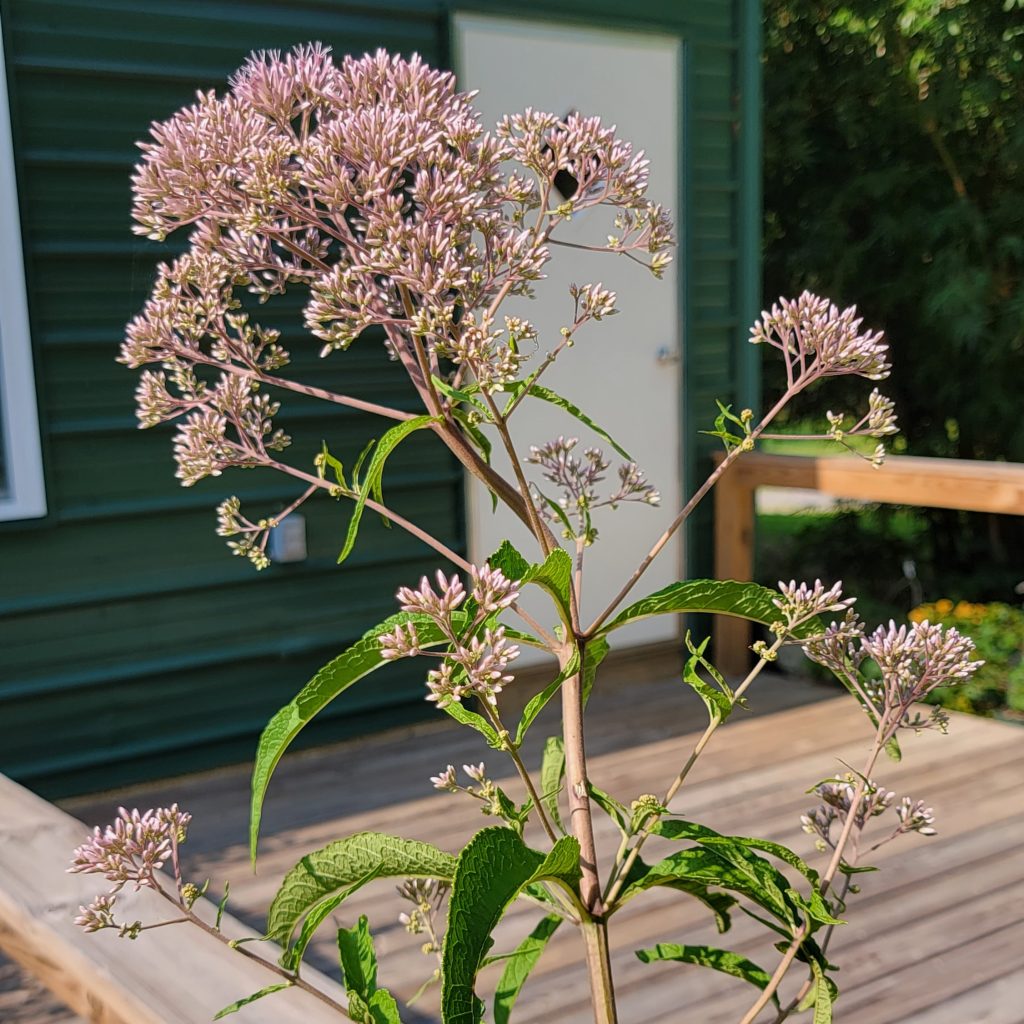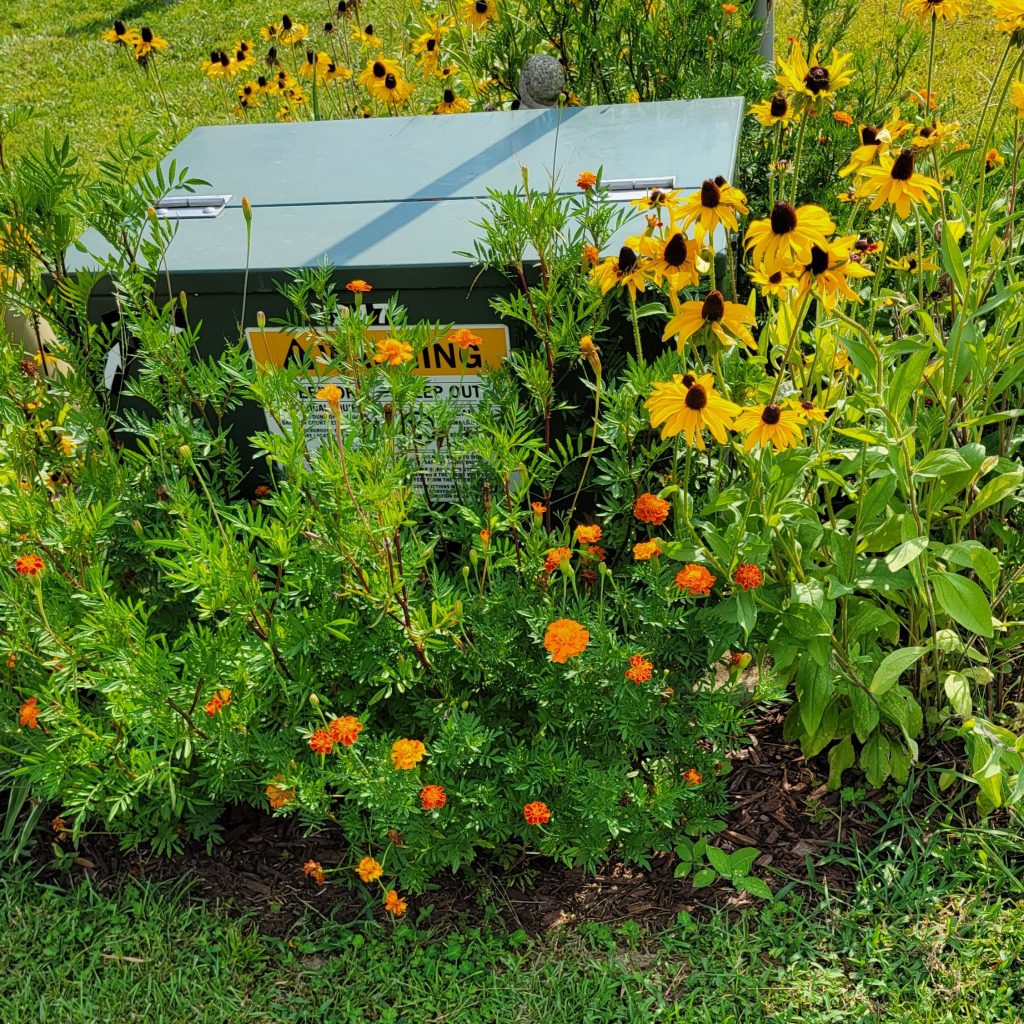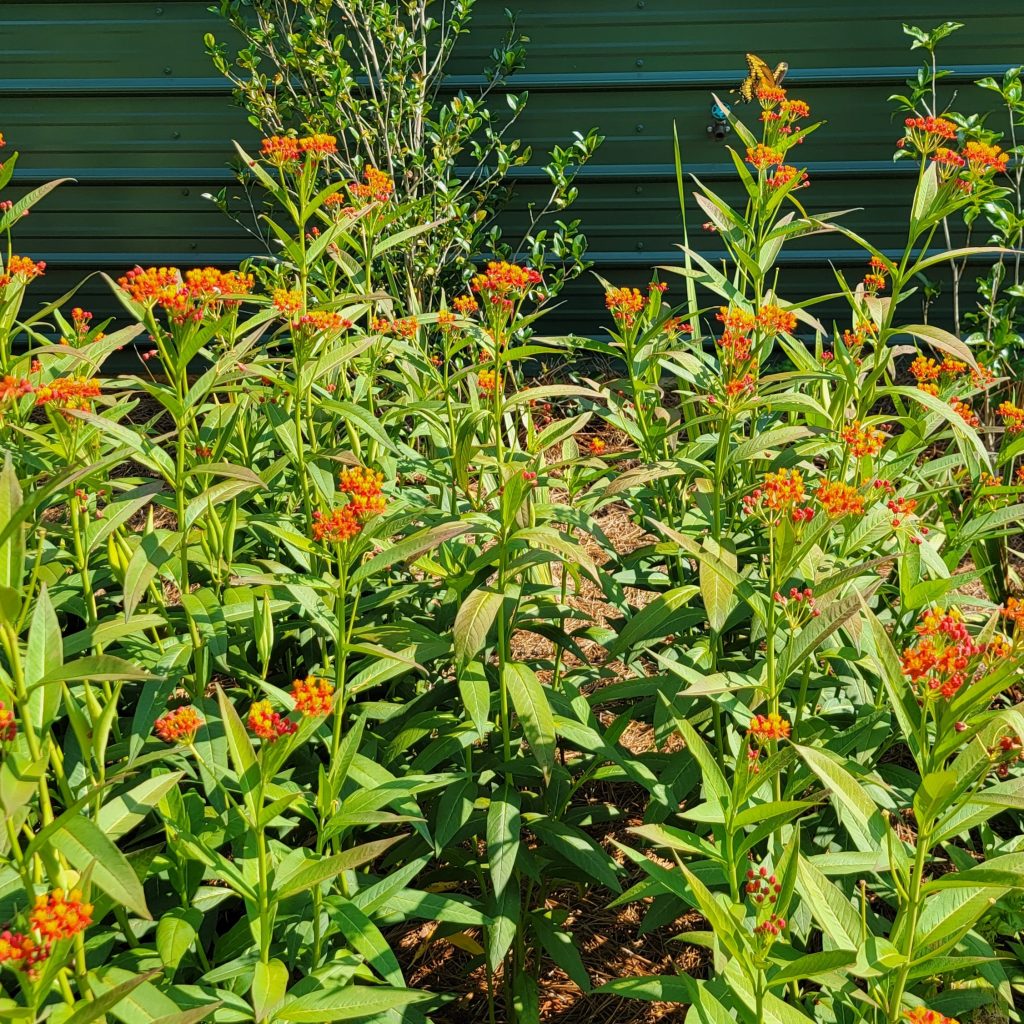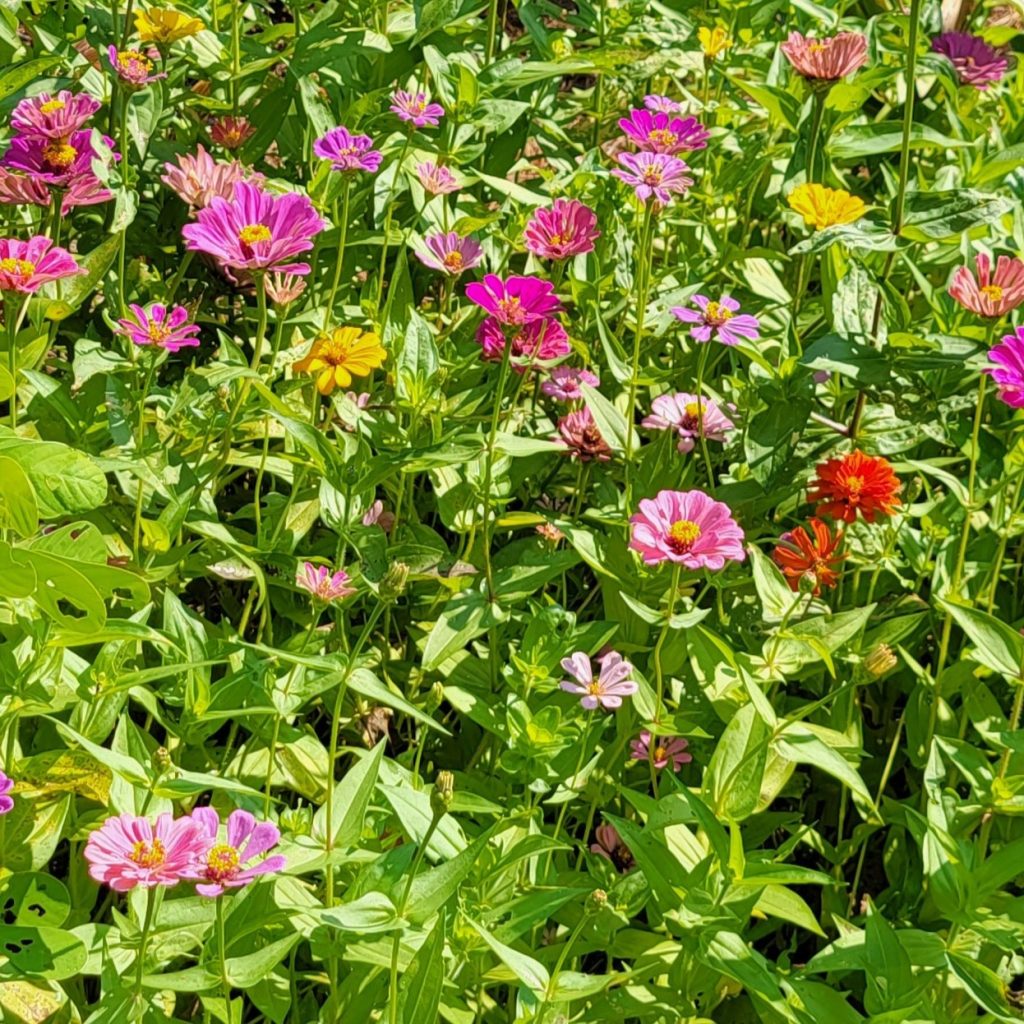July 2023 Summer Wild Flower Gardens
Summer Wild Flower Gardens
This article will certainly be longer than usual, and it will occasionally be modified over the summer. So, check back to see new pictures, primarily, and additional information.
Any of the plants mentioned herein may be found as seeds and/or potted plants at most of the garden centers mentioned in a prior blog from March 2022: Garden Centers and Nurseries. Unfortunately, Davis Nursery has gone out of business, but I do anticipate a new nursery at their location this fall – will keep you posted. You might find many of these plants at the Mobile Flea Market as well. Always an interesting place to go looking.
Black/Brown-Eyed Susan
Our first flowering plant is a perennial which is very well known and easily grown in your garden. As you drive around Quail Creek and, indeed, around Fairhope, you will see many examples of Black-eyed Susans in yards and in the wild along the roadsides.

They are easily maintained, and regular deadheading will extend the blooming season. Toward the end of the year, you may not want to deadhead the remaining flowers as they will self-seed.
They do like full sun and are not particular about the soil. You will need to water them the first year but then are fairly drought resistant. As with most plants, do keep spacing between the plants to prevent powdery mildew. They do well even without much, if any, fertilizer.
As they are self-seeding; you will always have new plants in your garden. If they clump you can also divide the clumps for additional plantings. If you have seeds, plant them in your garden after the ground warms up above 70 degrees.
Joe Pye Weed
Joe Pye is a name given to several species of the Eutrochium genus. The Eutrochium purpuream and Eutrochium maclatum are summer blooming wildflowers that may reach 6 feet or more in height. It makes a great background border plant and is a good butterfly attractor.

Growing from seed is more difficult than some plants as the seeds need to be cold stratified, i.e. in a plastic bag in the retrig for a few weeks. You may also propagate Joe Pye weed by dividing the root in the spring or fall. The easier way is to simply buy the potted seedlings from a local garden center. I have planted some this year and they are doing quite well as Joe Pye is a low maintenance plant. Joe Pye weed does require moist soil and watering is the most extensive care required for the plant. The blooms may be large and staking the tall plants is helpful. It does require full sun, but hot afternoon sun may cause yellowing of the leaves so some shade in the afternoon is beneficial. It will die back in the winter but returns in the spring. Osmocote is a good fertilizer when applied as Joe Pye weed as it starts to grow as well as some more when the plant starts to bloom.
Joe Pye weed can be cut back in the winter but do not trim any of the new growth as this is where new flowers come from. If you want to control the height, then cut the plant back to half size and it will send out more stems making a bushier plant and have more flowers. As in the case of the Milkweed plant, below, it easily spreads by seed or rhizomes – so watch it carefully so it does not get out of control.
Marigold
Who isn’t familiar with what is one of the most common and reliable of all annuals? Easily grown from seed or available as a bedding plant at virtually all garden centers, they come in a variety of heights and colors.
Note the orange marigolds interspaced with the Black Eyed Susans.

They demand very little care, bloom most of the summer, if you deadhead the spent blossoms you get more flowers. Plant them in full sun in moist well drained soil. They will not be as drought tolerant as some other summer plants so give them a good weekly watering.
They are propagated from seed, and I just scatter some seed on the prepared soil bed and gently rake them in with a leaf rake. Water them and in just a few days they will have sprouted. Marigolds are susceptible to “damping off”. Just be careful and allow good air circulation, sterile pots and planting soil, and space between the seedlings. They love the heat and sun and do not demand much fertilizer – although I do use some osmocote.
Blooming can be significantly enhanced by deadheading. You may with the young plants pinch off half of the buds to force the plant to put its energy into more foliage growth and more flowers. As most marigolds are short, they may be used as border plants. However, the taller African marigolds may grow to 3-4 feet in height.
I have not planted marigolds for the past couple of years as my wife greatly prefers zinnias, but I have planted them extensively in the past. However, I did plant some in my vegetable garden just not in front of the house.
Milkweed
Last year at our MGBC Plant Sale, I purchased several milkweed plants (Aselepias) as they are great butterfly attractors. Several garden centers in the area also sell milkweed plants. The plant is the only host plant that monarch butterflies will use for egg laying. No milkweed – no monarch butterflies!

Last year at our MGBC Plant Sale, I purchased several milkweed plants (Aselepias) as they are great butterfly attractors. Several garden centers in the area also sell milkweed plants. The plant is the only host plant that monarch butterflies will use for egg laying. No milkweed – no monarch butterflies! After the plants had bloomed, I collected the seed pods and used the seed to start the plants I have this year. Milkweed grows easily and they are already about 3-4 feet in height and covered with beautiful orange/yellow/red clusters of flowers Last year, the plants grew to be between 4-6 feet in height which required me having to stake the larger ones. There are over 100 native species of milkweed (Aselepias) with Butterfly Milkweed, or common milkweed being well behaved in the butterfly garden.
Milkweed is toxic to humans, household pets, and livestock so be careful where you plant them.
It needs minimal fertilizer, full sun, and minimal water. You do not need to fertilize them, but I do use a light sprinkling of osmocoat which does seem to help. Overwatering will kill them due to a fungal infection. In my case I use a soaker hose to provide water. Milkweed is a perennial which will go dormant in the winter and the foliage will die back in the winter but will come back the following spring. I have found that about 3/4s of them did not make it this past winter. The seeds have silky hairs which remind me of the cottonwood tree or a dandelion and are easily wafted with the wind. Consequently, if you let the seed pods distribute the seeds, they will appear all over your yard. I would suggest removing the seed pods you do not use for your own seeding purposes. Some varieties of the plant are more aggressive than others due to its seeding capability and it also spreads by underground rhizomes.
Look at https://www.joyfulbutterfly.com/product/butterfly-weed/ for some more information.
Sunflower
Must admit this is a new one for me for planting. I have a neighbor who has planted a few at my farm and they have done quite well. So, I have planted a bed and am waiting to see how they do!

Must admit this is a new one for me for planting. I have a neighbor who has planted a few at my farm and they have done quite well. So, I have planted a bed and am waiting to see how they do. After just a few days I have some seedlings starting to show themselves – so we will see. I will update this article over the summer to keep you posted. The sunflowers planted about a month ago have done well with big thick stems, but I have staked them as the blooms do get quite heavy. As you may know the blooms rotate to follow the sun during the day. Fortunately, I have a considerable amount of bamboo – so a lot of stakes.
These are annuals which prefer full sun and well-drained soil. Typically, they prefer a cooler temperature than what we have been getting – but watering frequently will promote bloom growth. Depending on the soil, loamy soil is preferred, you may not even have to fertilize them during the summer.
After the flowers have finished blooming, you may collect the seeds, make sure they are dry, selecting some of the best-looking seeds for planting next summer. Plant the seeds about 1-2 inches deep and about six inches apart. You may also plant these flower giants in a 7–10-gallon pot.
Zinnia
Of all the plants listed this one is truly a plant for the summer! The warmer the days the better the bloom. They bloom all summer and into the fall.

Don’t bother planting them until March or April when all chance of frost is gone. I do not bother planting a seed at a time but just broadcast a ‘bunch’ of seed over a bed, very gently drag a leaf rake over them, and then water them. Planting too thickly they will not do well so I may have to go back in and thin them by hand. Planted at the right time, when it is warm, I have had them germinate within two days. They LOVE the full sun! Occasionally I will throw a small amount of 10-10-10 over them and they are quite happy.
Once you get some zinnias just harvest the dead flower and you will have your seeds for next year’s crop at no cost! Keep the seeds in an airtight jar or Ziplock bag and they are ready for the next year.
My wife loves the cut flowers with their wide variety of colors. Sometimes they may be in my hot truck for a while, until I get home and they wilt very easily. Not a problem; put them in a vase with water and within 15 minutes they have perked up with no apparent aftereffects and will last a couple of weeks. Many times, I have planted a bed and when they are in full bloom it is most delightful to just sit and watch the butterflies enjoy themselves.